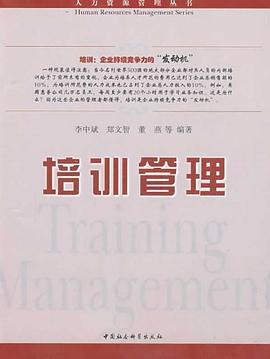

具体描述
作者简介
目录信息
Acknowledgements
Forward
1 SIGNALS AND SYSTEMS
1.0 Introduction
1.1 Continuous-Time and Discrete-Time Signals
1.2 Transformations of the Independent Variable
1.3 Exponential and Sinusoidal Signals
1.4 The Unit Impulse and Unit Step Functions
1.5 Continuous-Time and Discrete-Time Systems
1.6 Basic System Properties
1.7 Summary
2 LINEAR TIME-INVARIANT SYSTEMS
2.0 Introduction
2.1 Discrete-Time LTI Systems: The Convolution Sum
2.2 Continuous-Time LTI Systems: The Convolution Integral
2.3 Properties of Linear Time-invariant Systems
2.4 Causal LTI Systems Described by Differential and Difference Equations
2.5 Singularity Functions
2.6 Summary
3 FOURIER SERIES REPRESENTATION OF PERIODIC SIGNALS
3.0 Introduction
3.1 A Historical Perspective
3.2 The Response of LTI Systems to Complex Exponentials
3.3 Fourier Series Representation of Continuous-Time Periodic Signals
3.4 Convergence of the Fourier Series
3.5 Properties of Continuous-Time Fourier Series
3.6 Fourier Series Representation of Discrete-Time Periodic Signals
3.7 Properties of Discrete-Time Fourier Series
3.8 Fourier Series and LTI Systems
3.9 Filtering
3.10 Examples of Continuous-Time Filters Described by Differential Equations
3.11 Examples of Discrete-Time Filters Described by Difference Equations
3.12 Summary
4 THE CONTINUOUS-TIME FOURIER TRANSFORM 2,
4.0 Introduction
4.1 Representation of Aperiodic Signals: The Continuous-Time Fourier Transform
4.2 The Fourier Transform for Periodic Signals
4.3 Properties of the Continuous-Time Fourier Transform
4.4 The Convolution Property
4.5 The Multiplication Property
4.6 Tables of Fourier Properties and of Basic Fourier Transform Pairs
4.7 Systems Characterized by Linear Constant-Coefficient Differential Equations
4.8 Summary
5 THE DISCRETE-TIME FOURIER TRANSFORM
5.0 Introduction
5.1 Representation of Aperiodic Signals: The Discrete-Time Fourier Transform
5.2 The Fourier Transform for Periodic Signals
5.3 Properties of the Discrete-Time Fourier Transform
5.4 The Convolution Property
5.5 The Multiplication Property
5.6 Tables of Fourier Transform Properties and Basic Fourier Transform Pairs
5.7 Duality
5.8 Systems Characterized by Linear Constant-Coefficient Difference Equations
5.9 Summary
6 TIME AND FREQUENCY CHARACTERIZATION OF SIGNALS AND SYSTEMS
6.0 Introduction
6.1 The Magnitude-Phase Representation of the Fourier Transform
6.2 The Magnitude-Phase Representation of the Frequency Response of LTI Systems
6.3 Time-Domain Properties of Ideal Frequency-Selective Filters
6.4 Time-Domain and Frequency-Domain Aspects of Nonideal Filters
6.5 First-Order and Second-Order Continuous-Time Systems
6.6 First-Order and Second-Order Discrete-Time Systems
6.7 Examples of Time- and Frequency-Domain Analysis of Systems
6.8 Summary
7 SAMPLING
7.0 Introduction
7.1 Representation of a Continuous-Time Signal by Its Samples: The Sampling Theorem
7.2 Reconstruction of a Signal from Its Samples Using Interpolation
7.3 The Effect of Undersampling: Aliasing
7.4 Discrete-Time Processing of Continuous-Time Signals
7.5 Sampling of Discrete-Time Signals
7.6 Summary
8 COMMUNICATION SYSTEMS
8.0 Introduction
8.1 Complex Exponential and Sinusoidal Amplitude Modulation
8.2 Demodulation for Sinusoidal AM
8.3 Frequency-Division Multiplexing
8.4 Single-Sideband Sinusoidal Amplitude Modulation
8.5 Amplitude Modulation with a Pulse-Train Carrier
8.6 Pulse-Amplitude Modulation
8.7 Sinusoidal Frequency Modulation
8.8 Discrete-Time Modulation
8.9 Summary
9 THE LAPLACE TRANSFORM
9.0 Introduction
9.1 The Laplace Transform
9.2 The Region of Convergence for Laplace Transforms
9.3 The Inverse Laplace Transform
9.4 Geometric Evaluation of the Fourier Transform from the Pole-Zero Plot
9.5 Properties of the Laplace Transform
9.6 Some Laplace Transform Pairs
9.7 Analysis and Characterization of LTI Systems Using the Laplace Transform
9.8 System Function Algebra and Block Diagram Representations
9.9 The Unilateral Laplace Transform
9.10 Summary
10 THE Z-TRANSFORM
10.0 Introduction
10.1 The z-Transform
10.2 The Region of Convergence for the z-Transform
10.3 The Inverse z-Transform
10.4 Geometric Evaluation of the Fourier Transform from the Pole-Zero Plot
10.5 Properties of the z-Transform
10.6 Some Common z-Transform Pairs
10.7 Analysis and Characterization of LTI Systems Using z-Transforms
10.8 System Function Algebra and Block Diagram Representations
10.9 The Unilateral z-Transform
10.10 Summary
11 LINEAR FEEDBACK SYSTEMS
11.0 Introduction
11.1 Linear Feedback Systems
11.2 Some Applications and Consequences of Feedback
11.3 Root-Locus Analysis of Linear Feedback Systems
11.4 The Nyquist Stability Criterion
11.5 Gain and Phase Margins
11.6 Summary
APPENDIX PARTIAL-FRACTION EXPANSION
BIBLIOGRAPHY
ANSWERS
INDEX
· · · · · · (收起)
读后感
这本书确实非常好,但是在引入傅里叶变换的时候直接给出了公式,并没有向读者展示这个公式为什么能讲信号从时域导入频域。 我在初学傅里叶变换时找到了这个视频: https://www.bilibili.com/video/av19141078 把信号以角速度ω从x=0+、y=0+的地方开始绕着直角坐标系的原点匀速...
评分这是我们大学专业课的前教材 之前每一届都是用这本,到我们这届的时候突然就无良地换成了一本国产的……至于是哪本就不说了,重点是:通过对比,才深深地看到了差距。 的确,这本书相当的厚实,对于一些人来说,他的描述也较为啰嗦了。但是对于一个刚刚接触这门课的学生来说,...
评分看的是中文版的 专业需要 买了一本 比上学时用的教材好多了,例子和讲解都很到位 虽然各方面讲的都不是很深,但起码能建立起信号与系统的基本概念,再需要哪方面的知识再去看专门的书籍。 需要学习的朋友强烈推荐
评分Oppenheim的书的质量是不用怀疑的。翻译的老师也很用心。但是我还是喜欢研读只讲精华的小书,比如rudin爷爷的,stein老师的。 这些详细的书讲了很多分析和举例子。比较适合作为参考之用。
评分这本书从买下到最后看完用了4年的时间,其间一直被各种各样的事情打断,也因为这本书实在太厚。。。 看完之后,终于明白大学里学的几门课是干嘛的了。 我想,如果再让我念一遍大学的话,恐怕我还是不会好好念这些书,因为一方面难懂,另一方面如果不工作的话,我估计还是不知...
用户评价
课本啊~~~
评分黄院长教的耶~!
评分黄院长教的耶~!
评分课本啊~~~
评分课本啊~~~
相关图书
本站所有内容均为互联网搜索引擎提供的公开搜索信息,本站不存储任何数据与内容,任何内容与数据均与本站无关,如有需要请联系相关搜索引擎包括但不限于百度,google,bing,sogou 等
© 2025 book.quotespace.org All Rights Reserved. 小美书屋 版权所有




















